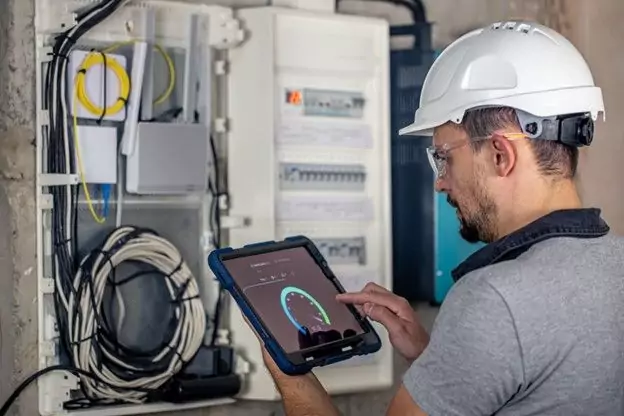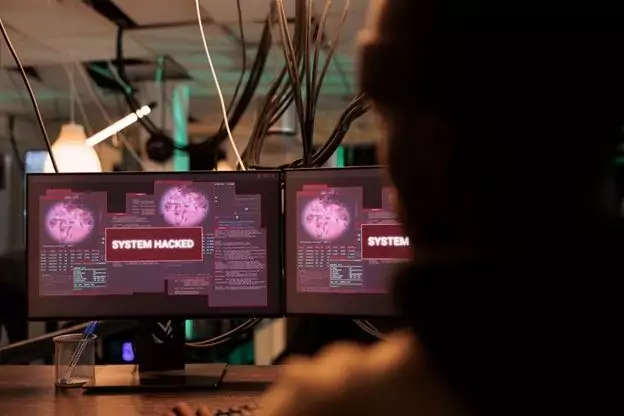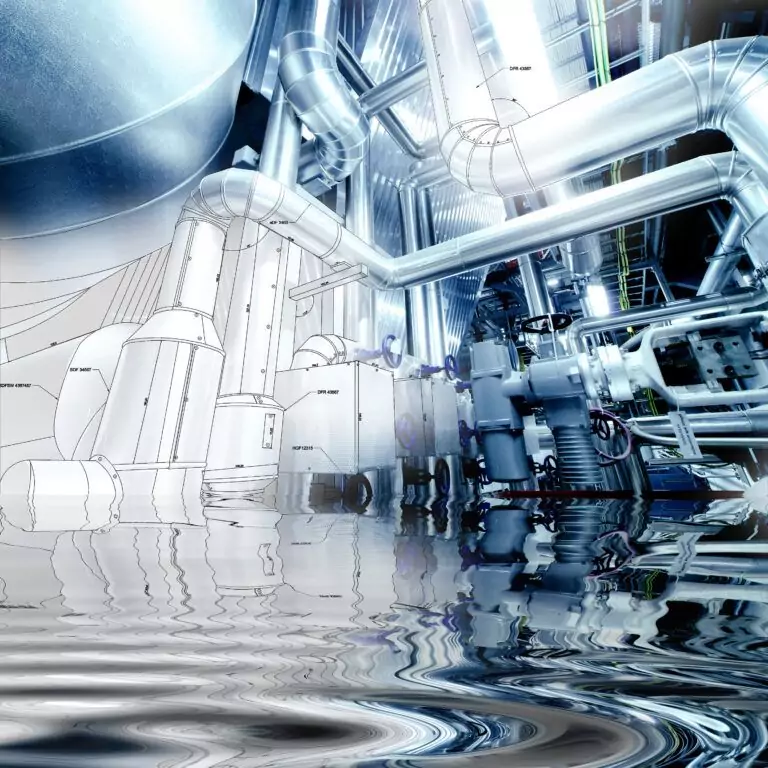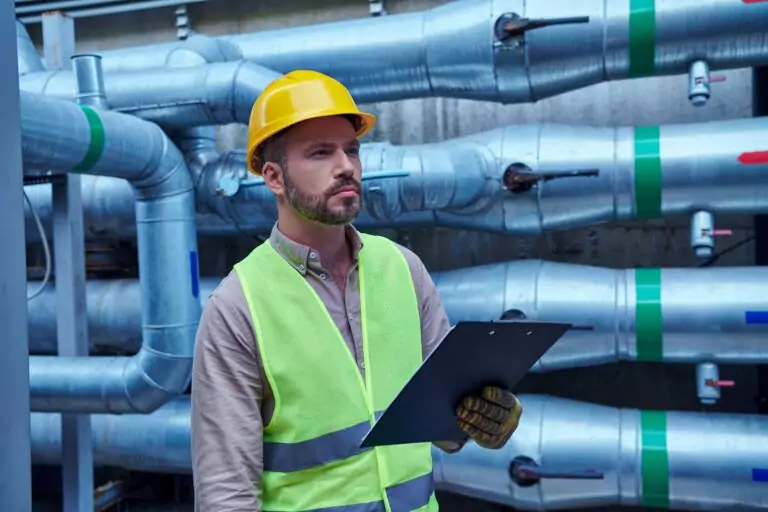Canada’s energy sector consists of oil, coal, natural gas, hydroelectricity, nuclear power, renewable resources among other sources of energy. Its energy facilities have contributed around 11.8% to the nominal GDP in 2022 – a significant contributor to the economy. Cyber-attacks and other criminal activities can threaten the operations – and finances – of these organizations having a negative impact on the economy.
Several large energy companies faced major setbacks recently because of cyberattacks. Cybersecurity breaches cost the companies millions of dollars before they could stabilize their systems. Cybersecurity issues aren’t just affecting the Canadian energy sector – the global energy sector is also at risk.
A typical energy facility includes production, storage, distribution, and conversion of energy resources but also includes the IT, system integration, financial and other systems. IT systems, in particular, are the brains of the facilities that hold the data and other resources that are important to the company.
When cybercriminals get access to these systems, they can manipulate them to achieve their criminal goals. That is why energy companies need to strengthen their cybersecurity practices.
In this article, we will focus on cybersecurity challenges faced by energy facilities throughout the world and also talk about how getting quality IT and system integration solutions will help companies avoid security issues in 2024.
Major cybersecurity challenges in 2024
In November 2023, the media revealed that some governments are taking significant steps to counter cyber threats and attacks in the energy sector. In fact, the Canadian government has been working on a bill to provide a regulatory framework that guarantees to protect critical private companies from cyber-attacks.

Despite strict measures by government and energy-related regulatory agencies – a dark cloud of cybersecurity challenges hovers over energy companies. Here are some challenges that the energy sector faces:
1. Weaponization of IoT and Edge Computing
The major IT changes and upgrades in the energy sector came with major challenges in the past few years. Hackers have exploited weak points in IT systems to gain access to critical company operating systems, causing physical damage and disruptions.
In 2024, the major challenge is to integrate the Internet of Things (IoT) and edge computing solutions into energy companies. As more energy facilities adopt IoT devices and edge computing, the cyber-attack opportunities expands significantly. Hackers can exploit vulnerabilities in these connected devices to disrupt operations, manipulate data, or even physically damage equipment (e.g. attacks targeting smart meters or wind turbine sensors).
2. Deepfakes and Social Engineering
The energy sector is using deepfake technology to generate training material more efficiently. This takes less time and less effort than the manual training data. However, with deepfake technology becoming increasingly advanced, people cannot differentiate what is real and what is fake.
In this way, attackers can create fake audio or video of authorized personnel to gain access to critical systems or manipulate operations. This adds another layer of complexity to traditional social engineering tactics, requiring advanced training for employees and robust authentication methods.
3. Exploiting AI in Energy Systems
The world is switching to artificial intelligence (AI) for almost everything and so will the energy sector in 2024. The compound annual growth rate of AI in the energy sector has increased to 25.6% in the Asia Pacific region. This means energy companies are looking for more ways to use AI in their operations – for example, using AI to improve predictions related to the distribution of energy.
While AI offers powerful solutions for optimizing energy systems, it also introduces new vulnerabilities. Hackers can manipulate AI algorithms to disrupt energy production, cause blackouts, or even steal valuable data. Implementing robust security measures for AI and machine learning systems is crucial for mitigating these risks.
4. Increased Targeting of Renewable Energy
In renewable energy plants, the most common IT systems are the SCADA, ICS, Smart Meters, Communication Systems, Software/Hardware systems, or IoT devices. These are the brains of the operations that control and monitor the entire facility.
With the growing emphasis on renewables, cybercriminals are shifting their focus to wind farms, solar power plants, and other green energy infrastructure. These facilities often lack the same level of cybersecurity as traditional energy companies, making them prime targets for disruption or data theft.
5. Nation-State Attacks and Geopolitical Tensions
The ongoing geopolitical tensions and conflicts increase the risk of cyberattacks from nation-states targeting critical energy infrastructure. These attacks can be highly sophisticated and designed to cause widespread disruptions or even national security incidents.
Energy companies need to be prepared for such attacks and collaborate with government agencies to strengthen their defenses.
IT Solutions for security challenges in 2024

Here are the some technical and non-technical solutions to help you mitigate cybersecurity risks in energy facilities.
1. IoT and Edge Computing Challenges
Companies should try to implement a platform that integrates physical security (CCTV, access control) with network security (firewalls, intrusion detection) and edge device management. This allows for continuous monitoring and detection of anomalous activity across all layers.
Additionally, they should enforce Zero-Trust Network Access, which means strict access controls even for connected devices, granting the least privilege and requiring multi-factor authentication. Segment networks further for IoT devices to limit damage in case of breaches.
To tighten the security further, make sure your cybersecurity team implements firmware and patch management. For this, you develop secure firmware for edge devices and implement automated patch management systems to address vulnerabilities promptly.
2. Deepfakes and Social Engineering Challenges
The best and easiest way is to create biometric authentication. Yes, you can use multi-factor authentication with strong biometric methods like facial recognition or voice analysis to counter deep-fakes.
For advanced user training, train employees on deepfake detection techniques, phishing awareness, and secure communication protocols. Conduct regular simulations to test and refine security protocols.
Also, you can integrate AI-powered tools that can analyze communication patterns and behavior to identify suspicious activity or impersonation attempts.
3. Avoiding Exploitation of AI in Energy Systems
The best way to combat this challenge is to employ explainable AI models that reveal the reasoning behind their decisions, allowing for easier vulnerability identification and mitigation. It’s also important to conduct regular security audits of AI systems and data pipelines.
As an advanced measure, you can get help from data sandboxing and access control. For example, you can use data sandboxes to restrict access to sensitive data used by AI models and implement strict access controls to prevent unauthorized modifications or cyber-attacks.
Additionally, you should continuously monitor AI systems for anomalous behavior and performance degradation and develop rapid response procedures to address security incidents and update AI models with improved security features.
4. To Avoid Increased Targeting of Renewable Energy
You must have standardized security protocols. For this, you need to develop industry-wide cybersecurity standards and best practices specifically for renewable energy infrastructure.
In this protocol, you also add security vulnerability assessments. You conduct regular vulnerability assessments and penetration testing on all IT and technical systems to identify and address weaknesses before attackers exploit them.
You foster collaboration and information sharing between renewable energy companies, government agencies, and cybersecurity experts to stay ahead of emerging threats and share best practices.
5. For Nation-State Attacks and Geopolitical Tensions
This emerges as a major threat, but you can avoid it by investing in zero-day attack mitigation strategies like sandboxing and deception tactics to minimize damage and buy time for response.
You also develop and regularly test comprehensive incident response plans for nation-state attacks, including communication protocols, emergency shutdown procedures, and recovery strategies.
Most importantly, you establish strong partnerships with government cyber defense agencies to receive threat intelligence, coordinate response efforts, and benefit from specialized expertise.
Conclusion
Cybersecurity breaches have negatively impacted many companies and government organizations worldwide. The energy sector is a major economic resource for many countries, including Canada, so energy companies must also take strict measures to counter security threats in 2024. Combining IT and system integration solutions with cyber hygiene practices is key to effectively addressing these emerging cybersecurity challenges.
Looking for some system integration help?
Vista Projects is an integrated engineeringThe process of integrated engineering involves multiple engineering disciplines working in conjunction with other project disciplines to e... services firm able to assist with your system integration and engineering projects. With offices in Calgary, Alberta, Houston, Texas, and Muscat, Oman, we help clients tailor engineering phases for the unique needs of their projects. Contact us today!









